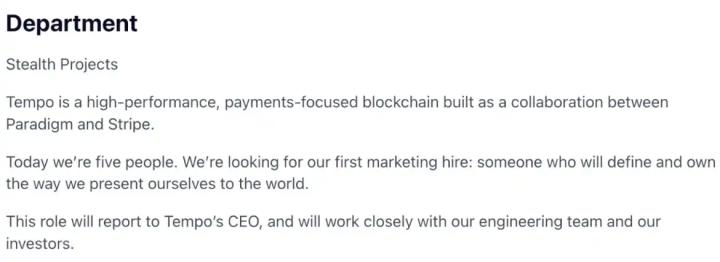"Circle is taking a defensive and passive response strategy, while Stripe is focusing on the future of payments and its own business, adopting an offensive and proactive strategy."
Written by: Ben Weiss, Fortune Magazine
Translated by: Luffy, Foresight News
Building a blockchain has become a new trend in the financial technology field. The US cryptocurrency exchange Coinbase already has its own blockchain; online broker Robinhood announced plans to launch its own blockchain in June, and its competitor eToro is also considering following suit. Now, financial technology giant Stripe and stablecoin issuer Circle have joined this trend.
According to a deleted job posting and sources familiar with the matter, Stripe is developing a blockchain called Tempo, focusing on payment functions. Circle, meanwhile, stated on Tuesday morning that it is building Arc, a blockchain designed specifically for stablecoins.
The sudden emergence of enterprise blockchains raises a question: Why do all large financial companies (especially Stripe and Circle) seem to be transforming into blockchain developers?
Controlling the Entire Tech Stack
Two stablecoin executives and an investor said Stripe's motivation is simple: vertical integration.

By acquiring the stablecoin startup Bridge for $1.1 billion, Stripe has brought its own stablecoins and payment network into its portfolio. After acquiring the cryptocurrency wallet company Privy in June, it can also provide users with accounts to store stablecoins. For Stripe, known for traditional payment services like online checkout, adding blockchain business means building a mature stablecoin ecosystem.
Rob Hadick, a general partner at crypto venture capital firm Dragonfly who often invests in stablecoin startups, told Fortune Magazine: "These big companies are motivated to control the entire tech stack."
Stripe is confident that stablecoins are the future of payments. If a significant portion of its $1.4 trillion transaction volume is completed through stablecoins, it could miss out on millions of dollars in revenue.
Blockchains are similar to Google Cloud or Amazon Web Services in the crypto technology stack. A group of decentralized servers process many transactions on crypto applications, and server owners earn fees for providing computing power.
For example, according to defillama data, Coinbase's own blockchain Base has generated over $130 million in fees since its launch in early 2023.
Luca Prosperi, co-founder and CEO of stablecoin infrastructure company M0, told Fortune Magazine: "Everyone wants to control the economy."
However, it remains to be seen whether the proliferation of stablecoins and their associated blockchains will make it difficult for ordinary consumers to navigate the endless tokens and blockchains.
Stripe did not respond to a request for comment.
Defense and Offense

Circle CEO Jeremy Allaire
Circle's motivation is similar.
This stablecoin issuer, which went public in a hot market in June, has its own token USDC and has built a growing payment network, even offering services that allow enterprise customers to create their own crypto wallets. However, this crypto company does not yet have its own blockchain and cannot earn fees from payment transaction volumes in its services.
"They also want to control this link in fund flow," said Bam Azizi, co-founder and CEO of crypto payment startup Mesh, when discussing Circle.
But Stripe and Circle are not in the same situation. Stripe is one of the largest private companies in the tech sector, with diverse revenue sources as a dominant payment processor. In January alone, its Stripe Billing business had an annual revenue of $500 million.
In contrast, in the second quarter of 2025, over 96% of Circle's revenue came from interest on US Treasuries backing its stablecoin. If interest rates drop, its entire business model could be threatened.
Circle CEO Jeremy Allaire said in an interview with The Information about the company's second-quarter performance: "We are building a complete system, from the infrastructure layer to the stablecoin layer, to the payment network layer." A Circle spokesperson declined to comment further.
Nevertheless, some believe this newly listed company is catching up with competitors.
"Circle is taking a defensive and passive response strategy," said Hadick, the general partner at Dragonfly, "while Stripe is focusing on the future of payments and its own business, adopting an offensive and proactive strategy."







